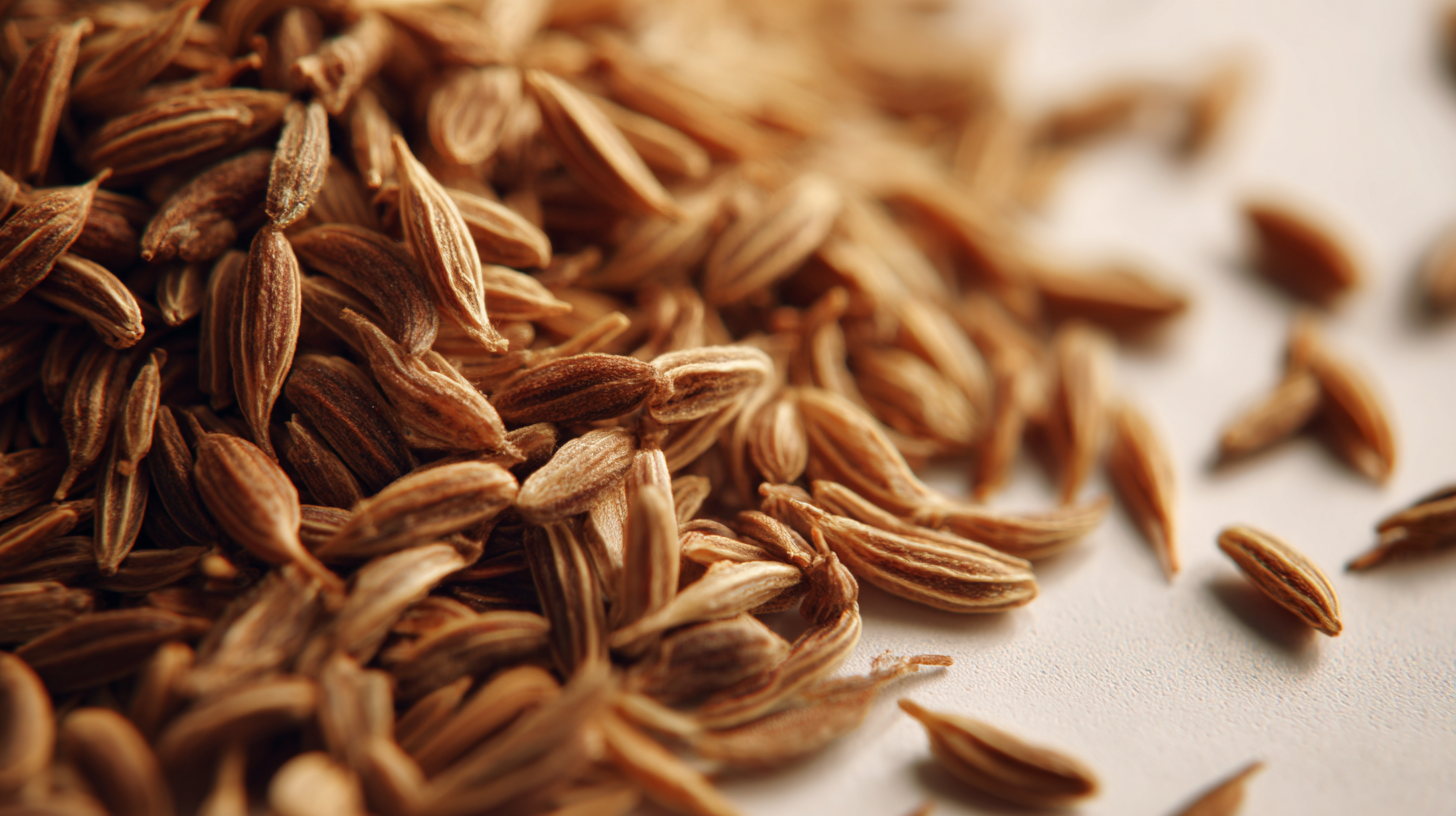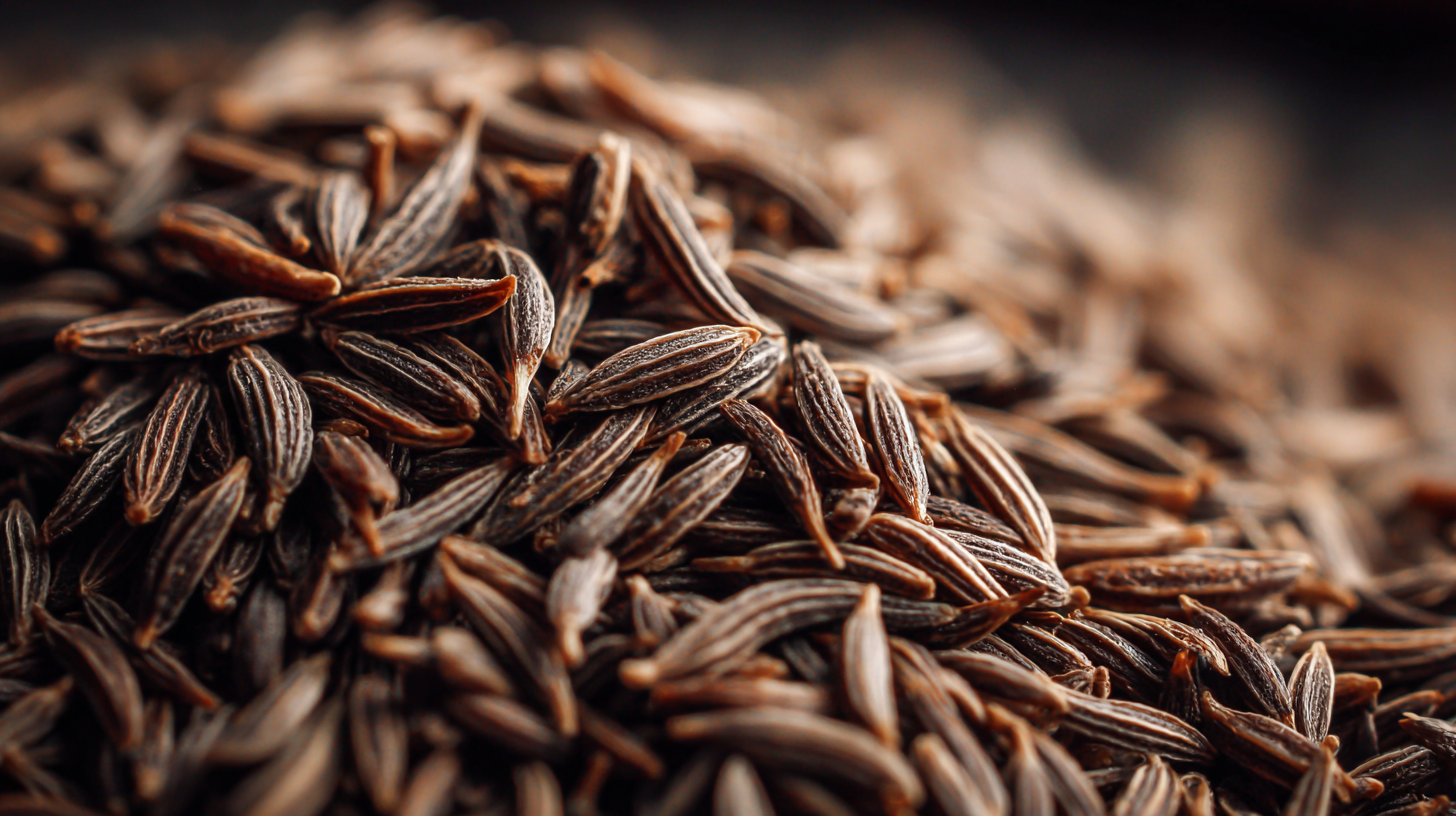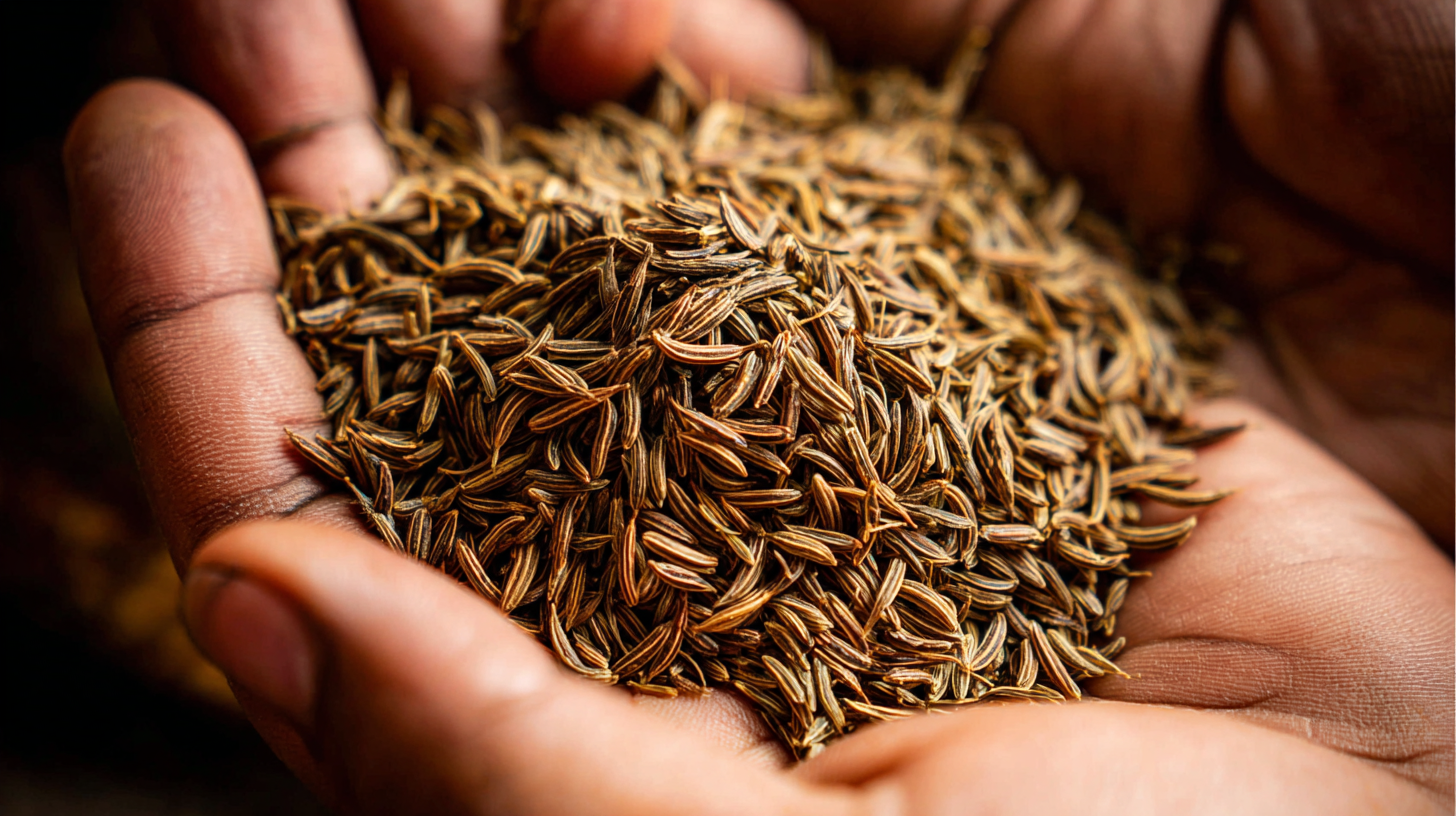The global market for Cumin Seed has seen significant growth, with reports indicating a compound annual growth rate (CAGR) of approximately 5% over the past decade. This surge is primarily driven by increased demand in culinary applications and the rising popularity of ethnic cuisines around the world. As consumers continue to seek quality ingredients, the importance of selecting the right source for Cumin Seed becomes paramount. China's reputation for manufacturing high-quality spices has earned it respect in the global arena, making it a prominent player in the cumin seed supply chain.

Understanding the nuances of sourcing the best Cumin Seed—considering factors such as origin, quality standards, and supply reliability—can significantly influence market competitiveness. As businesses strive to cater to this growing demand, navigating the complexities of global sourcing becomes crucial for maintaining quality and meeting customer expectations.
When selecting cumin seeds for your global sourcing needs, understanding the different types available in the market is crucial. Primarily, cumin seeds can be categorized into two main varieties: Cumin (Cuminum cyminum) and Black Cumin (Nigella sativa). Cumin is widely used in cuisines across the globe, known for its warm and earthy flavor, while Black Cumin offers a slightly different taste profile with its nutty and peppery notes. Each type serves unique culinary purposes and can influence the final dish substantially.
Tips for sourcing cumin seeds effectively include assessing the seed's origin and quality. Seeds sourced from regions known for their spice production, such as India and Iran, often yield superior flavor and potency. Additionally, look for whole seeds rather than ground cumin, as this ensures freshness and retains the essential oils that contribute to its aroma and taste. Finally, consider buying in bulk to reduce cost and ensure you have a steady supply for your culinary creations.
When sourcing cumin seeds globally, several key factors should be taken into account to ensure you select the best quality product for your needs. One significant aspect is the origin of the seeds. Different regions produce cumin with varying flavor profiles and levels of potency. For instance, Indian cumin is known for its strong aroma and flavor, while Syrian cumin may have a milder essence. Understanding these distinctions can help you select the right type for your culinary applications.
Tips: Always request samples before making large purchases. This allows you to evaluate the flavor, aroma, and freshness of the cumin seeds. Additionally, inquire about the growing practices and harvesting methods. Seeds that are sourced from organic farms are often of higher quality and free of harmful pesticides.
Another important factor is the supplier's reliability. Look for suppliers with established reputations and positive reviews from other importers. A trustworthy supplier will provide transparency regarding the sourcing process and the quality control measures they implement. Consider visiting the suppliers if possible, as this can provide further assurance of the seeds' quality and the supplier's credibility.
Tips: Establish a clear communication channel with your supplier to facilitate prompt updates on your orders. Also, discuss your specific requirements up front to ensure they can meet your sourcing needs effectively.

As we look ahead to 2025, understanding market trends and demand for cumin seeds becomes crucial for businesses involved in global sourcing. According to a recent report by Market Research Future, the global cumin seed market is projected to grow at a CAGR of approximately 4.5% during the forecast period. This growth is primarily driven by increasing consumer awareness of the health benefits associated with cumin, as it is known for its antioxidant and anti-inflammatory properties. Furthermore, the rising popularity of cuisines that incorporate cumin, especially in Asian and Middle Eastern cooking, will play a significant role in driving demand.
In addition to culinary usage, cumin seeds are finding their place in the growing health and wellness sector. A report from Grand View Research highlights that by 2025, the demand for organic cumin seeds is expected to double as more consumers favor natural and organic products. This shift can be attributed to the increasing trend of clean eating and the substantial rise in vegetarian and vegan lifestyles. For businesses looking to source cumin seeds, staying informed about these evolving market dynamics is essential to meet the projected demand and align with consumer preferences effectively.
When evaluating the quality of cumin seeds for your supply chain, it's crucial to consider several key factors that impact both flavor and shelf life. First, look for seeds that display a uniform color—typically brown or yellow-brown. High-quality cumin seeds should be free from dust, debris, and any signs of mold or moisture, which can lead to degradation in flavor and quality. A strong aroma is also an indicator of freshness; you should be able to detect the distinct, warm fragrance that cumin is known for.
In addition to visual and olfactory assessments, analyzing the seed's size and shape can provide further insights into their quality. Larger, plumper seeds often suggest optimal ripeness, while smaller or shriveled seeds might indicate poor harvest conditions. Collaborating with reputable suppliers who follow stringent quality control measures can ensure a steady supply of premium cumin seeds. Always request sample batches for testing before fully committing to large orders, as this step can safeguard your supply chain against inferior products that could compromise the integrity of your offerings.

In recent years, the global sourcing of cumin seeds has encountered a transformative shift driven by the increased demand for sustainable practices within the food industry. As restaurants and food manufacturers embrace eco-friendly approaches, the sourcing of cumin seeds must align with these values. For instance, companies focusing on organic production and ethical sourcing are setting new standards in spice manufacturing, ultimately enhancing brand appeal to environmentally conscious consumers.
To effectively select the best cumin seeds for your sourcing needs, consider implementing these tips: First, verify that your suppliers practice sustainable farming methods, which can enhance cumin yield per acre. Data indicates that regions committed to sustainable practices can achieve significantly higher outputs compared to conventional methods. Second, take advantage of technological advancements, such as employing AI in spice and fruit mapping, to ensure quality and traceability in your sourcing process. This can lead to more informed decisions and higher consumer satisfaction.
Lastly, stay informed about the latest trends in the culinary scene. The burgeoning growth in farm-to-table initiatives has encouraged restaurants to adopt hyper-local menus, increasing the demand for regionally sourced spices, including cumin. By understanding these dynamics, buyers can better navigate sourcing strategies and meet evolving consumer preferences effectively.
